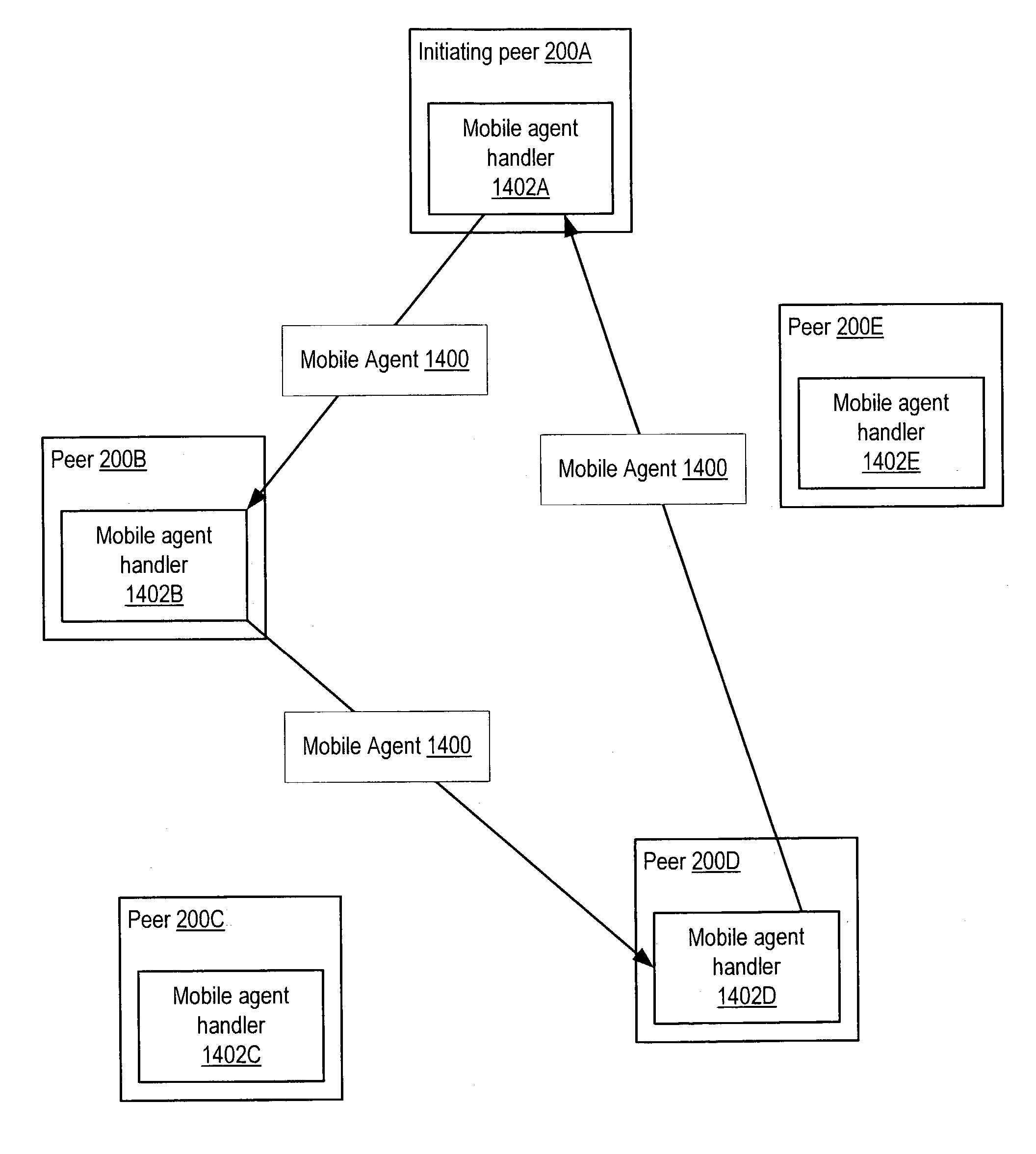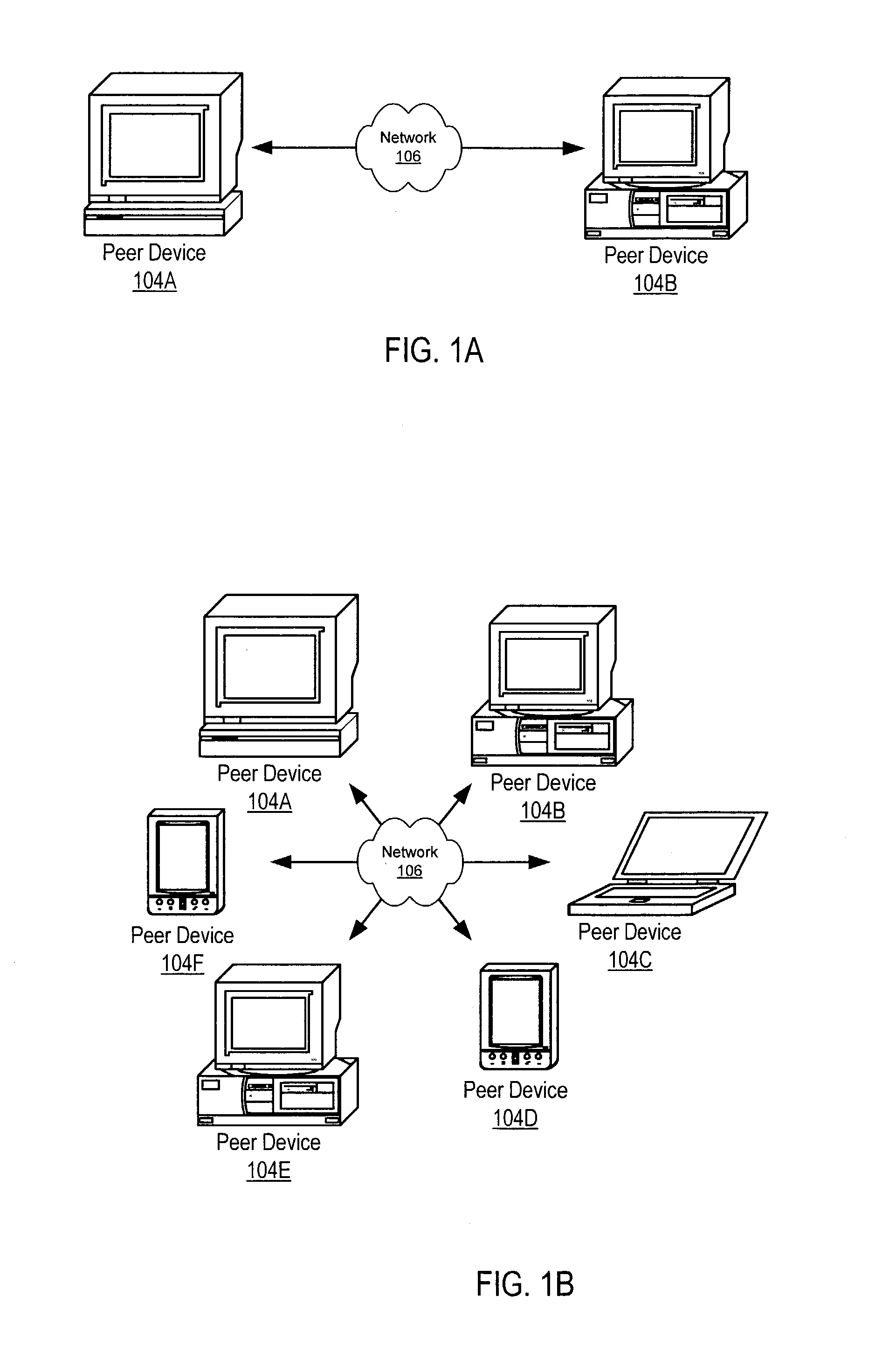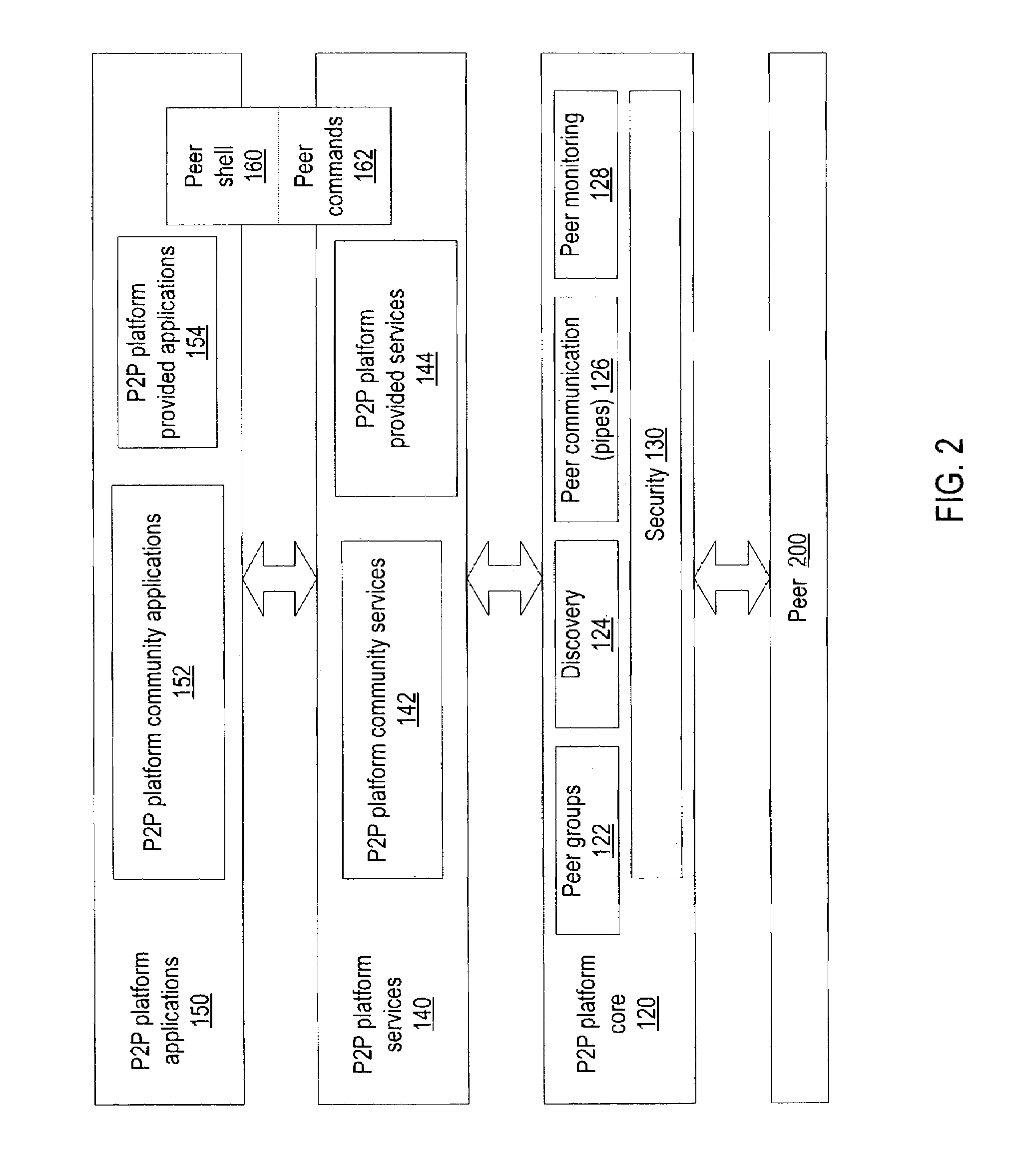Managing distribution of content using mobile agents in peer-topeer networks
a technology of peer-topeer network and content distribution, applied in the field of computer networks, can solve the problems of increasing difficulty in finding useful information in real time, no single search engine or portal can locate and catalog the ever-increasing amount of information, and the vast underutilization of resources
- Summary
- Abstract
- Description
- Claims
- Application Information
AI Technical Summary
Benefits of technology
Problems solved by technology
Method used
Image
Examples
Embodiment Construction
[0078]Embodiments of a system and method for implementing mobile agents in peer-to-peer (P2P) networking environments are described. A mobile agent may be software configured to operate on different nodes in a network and gather information or perform some service on host nodes in the network for a program, system, or user. For example, a mobile agent may be created on one node in a network, start executing on that node, be transferred to another node, and continue executing on that other node. A mobile agent may be configured to perform one or more operations on network nodes hosting the mobile agent. A mobile agent may be configured to navigate through the network from node to node according to an itinerary.
[0079]FIG. 34 illustrates a device 1300 (also referred to herein as a node) including a processor 1301, memory 1302 coupled to the processor 1301, and one or more network connections 1303, for participating as a peer node in a peer-to-peer network according to one embodiment. T...
PUM
 Login to View More
Login to View More Abstract
Description
Claims
Application Information
 Login to View More
Login to View More - R&D
- Intellectual Property
- Life Sciences
- Materials
- Tech Scout
- Unparalleled Data Quality
- Higher Quality Content
- 60% Fewer Hallucinations
Browse by: Latest US Patents, China's latest patents, Technical Efficacy Thesaurus, Application Domain, Technology Topic, Popular Technical Reports.
© 2025 PatSnap. All rights reserved.Legal|Privacy policy|Modern Slavery Act Transparency Statement|Sitemap|About US| Contact US: help@patsnap.com



